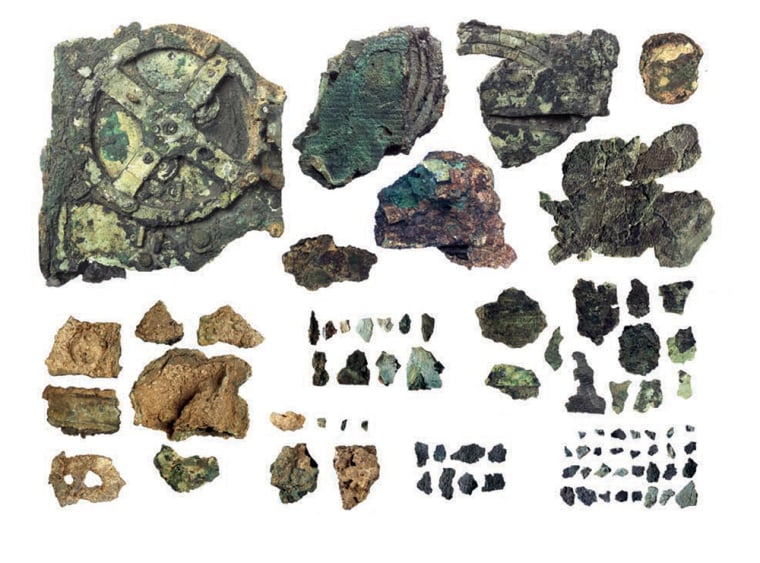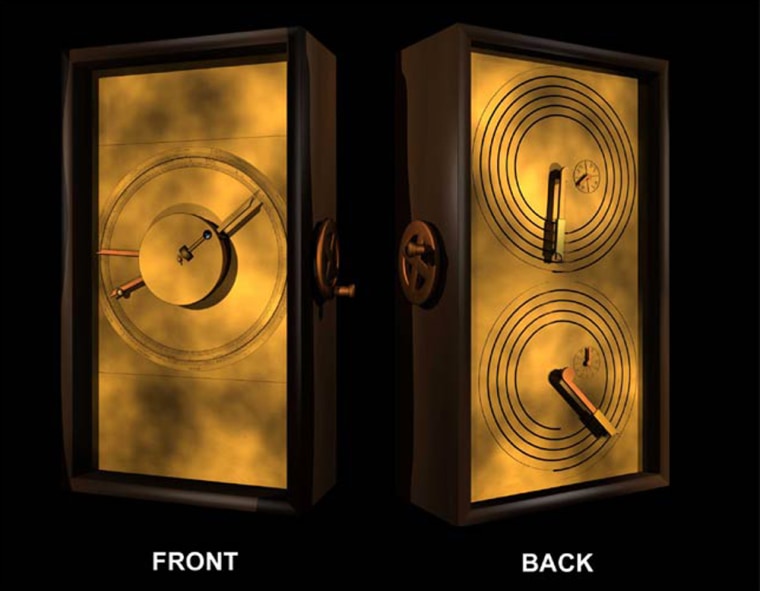Scientists have finally demystified the incredible workings of a 2,100-year-old astronomical calculator built by ancient Greeks.
A new analysis of the Antikythera Mechanism, a clocklike machine consisting of more than 30 precise, hand-cut bronze gears, show it to be more advanced than previously thought — so much so that nothing comparable was built for another thousand years.
"This device is just extraordinary, the only thing of its kind," said study leader Mike Edmunds of Cardiff University in Wales. "The design is beautiful, the astronomy is exactly right … In terms of historical and scarcity value, I have to regard this mechanism as being more valuable than the Mona Lisa."
The researchers used three-dimensional X-ray scanners to reconstruct the workings of the device's gears, and high-resolution surface imaging to enhance faded inscriptions on its surface.
Precise astronomy
The new analysis reveals that the device's front dials had pointers for the sun and moon — called the "golden little sphere" and "little sphere," respectively — and markings which coincided with the zodiac and solar calendars. The back dials, meanwhile, appear to have been used for predicting solar and lunar eclipses.
The researchers also show that the device could mechanically replicate the irregular motions of the moon, caused by its elliptical orbit around Earth, using a clever design involving two superimposed gear-wheels, one slightly off-center, that are connected by a pin-and-slot device.
The team was also able to pin down the device's construction date more precisely. Radiocarbon dating suggested it was built around 65 B.C., but newly revealed lettering on the machine indicate a slightly older construction date of 150 to 100 B.C. The team's reconstruction also involves 37 gear wheels, seven of which are hypothetical.
"In the face of fragmentary material evidence, such guesswork is inevitable. But the new model is highly seductive, and convincing in all of its detail," Francois Charette, a researcher at the Ludwig-Maximilians University in Germany who was not involved in the study, wrote in a related article in the journal Nature.
Discovered in 1900
Pieces of the calculating machine were discovered by sponge divers exploring the remains of an ancient shipwreck off the tiny island of Antikythera in 1900. For decades, scientists have been trying to figure out how the device's 80 fragmented pieces fit together and unlock its workings.

Previous reconstructions suggested the Antikythera Mechanism was about the size of a shoebox, with dials on the outside and a complex assembly of bronze gear wheels within. By winding a knob on its side, the positions of the sun, moon, Mercury and Venus could be determined for any chosen date. Newly revealed inscriptions also appear to confirm previous speculations that the device could also calculate the positions of Mars, Jupiter and Saturn — the other planets known at the time.
The international team, led by Edmunds and Tony Freeth, also of Cardiff University, included astronomers, mathematicians, computer experts, script analysts and conservation experts from Britain, Greece and the United States.
The researchers plan to create a computer model of how the Antikythera Mechanism worked and eventually a working replica.
The team's findings will be presented in a two-day international conference in Athens and published in Thursday's issue of Nature.
